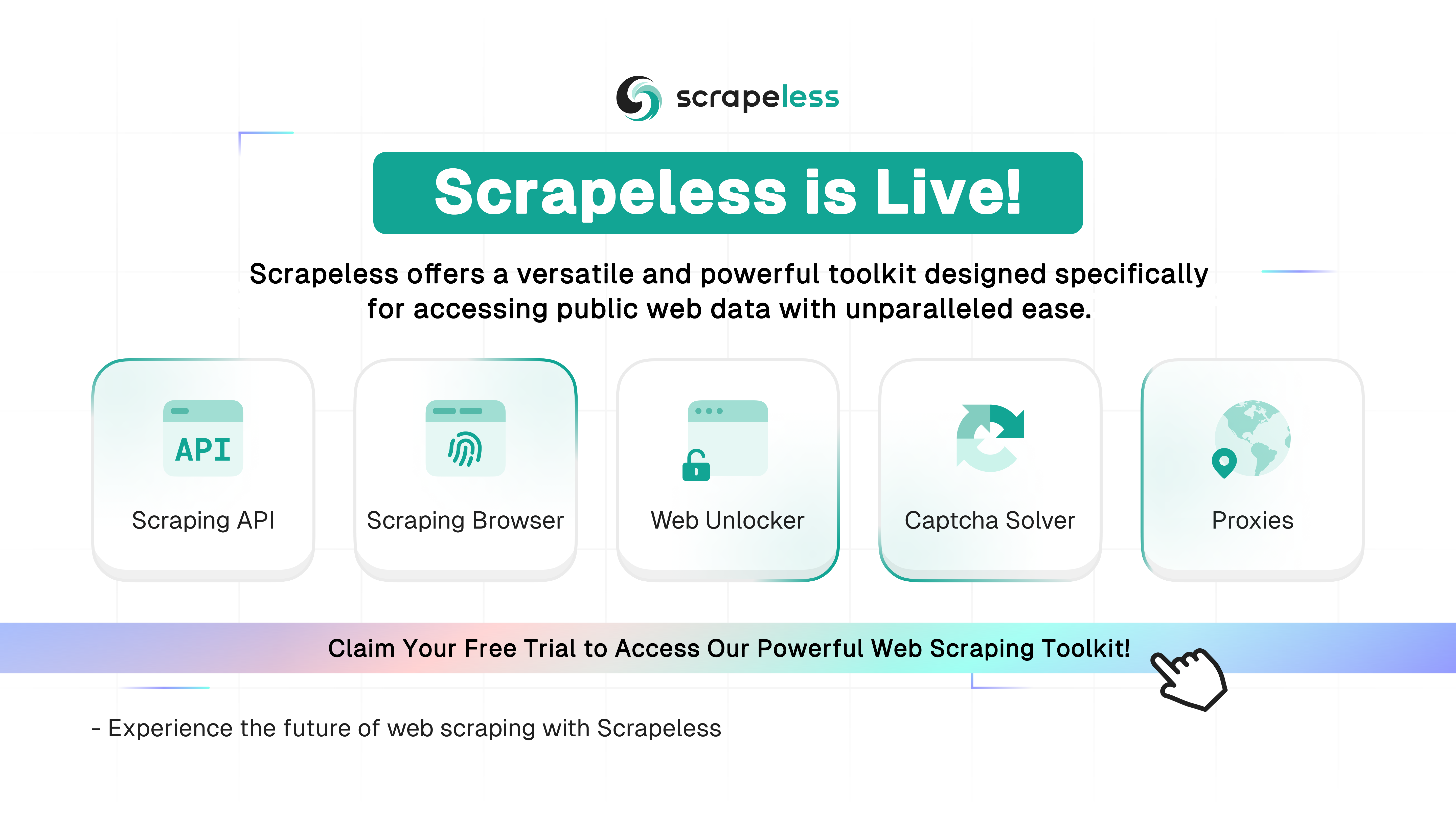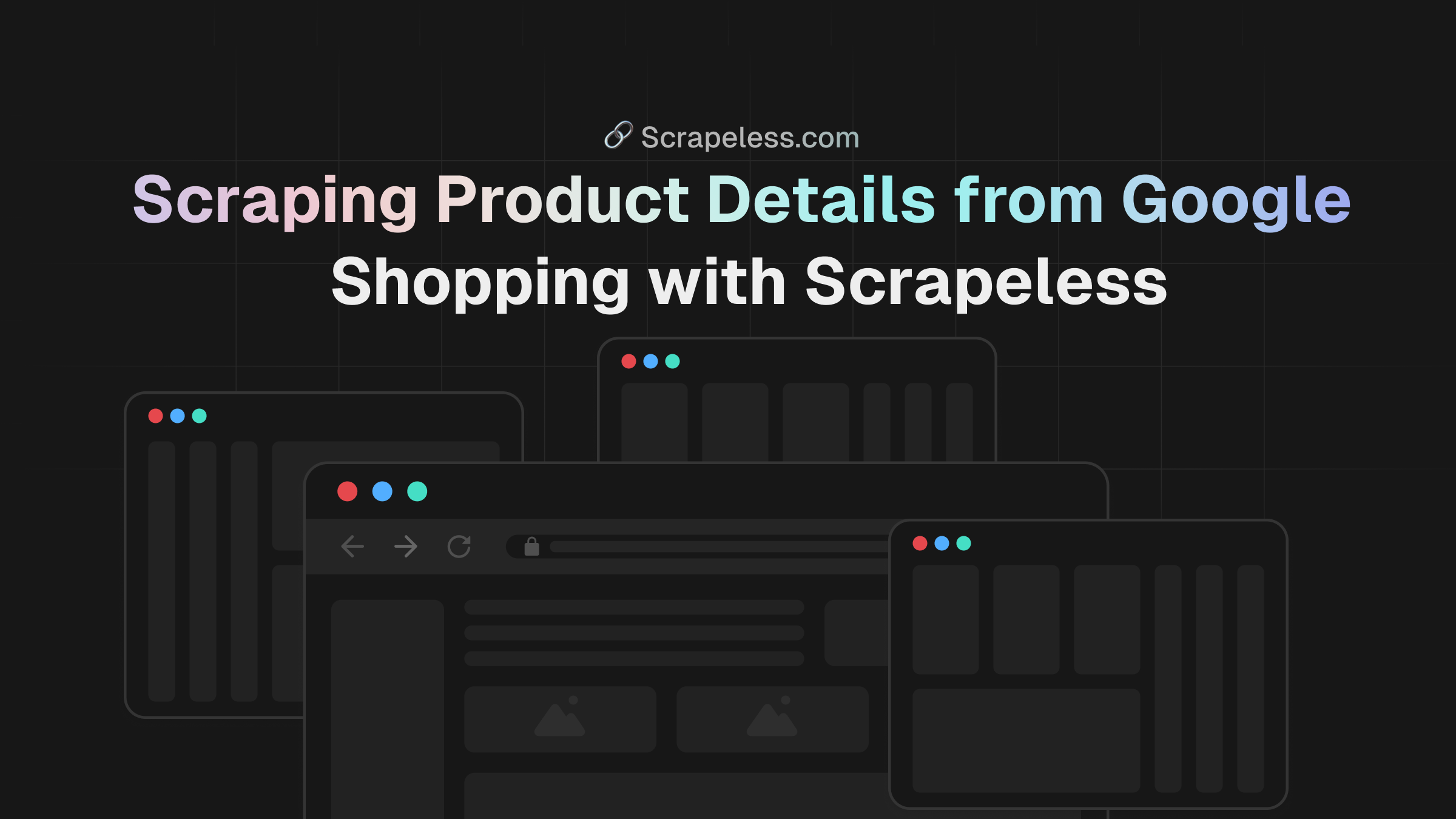Five Key Trends Shaping the Web Scraping Industry in 2025
Specialist in Anti-Bot Strategies
With the rapid iteration of artificial intelligence technologies and the explosion of global data demand, the web scraping industry is at the forefront of transformation. In 2025, five key trends—ranging from intelligent scraping to compliance governance, from dynamic data to multimodal expansion—will reshape the development of this field.
1. AI and Machine Learning Integration: From Automation to Intelligence
The deep integration of AI is fundamentally changing the underlying logic of web scraping. Traditional rule-based scraping is gradually being replaced by machine learning-driven predictive scraping. For instance, reinforcement learning-based intelligent agents can autonomously analyze webpage structures, dynamically adjust scraping strategies, bypass anti-scraping mechanisms, and even predict changes in dynamic content, significantly improving efficiency.
Intelligent Data Cleaning and Dynamic Content Extraction
AI is becoming increasingly critical in data cleaning. Using natural language processing (NLP) and computer vision technologies, web scrapers can automatically filter out noise, recognize semantic relationships, and correct errors in real time. For example, when dealing with dynamically rendered web pages (such as those built with React or Vue frameworks), AI-powered headless browsers (like Scrapeless’s Scraping Browser) can simulate human interactions to accurately extract dynamically loaded content.
General AI Agents That Transform Thought into Action
From the launch of ChatGPT AI Operator to the emergence of Manus, AI-driven products are transforming how people work and live. Manus—the world's first general AI Agent—excels in autonomously planning and executing complex tasks. Not only can it efficiently handle diverse tasks, but it also provides an intuitive user interface and multi-scenario applications, truly making life easier.
In web scraping and data collection, Manus introduces a new approach: rather than just scraping data, it focuses on transforming data into actionable insights, allowing users to navigate massive information flows effortlessly.
2. Rising Demand for Real-Time and Dynamic Data
In today’s world, where data updates rapidly and dynamic content is abundant, the ability to perform real-time scraping and continuous data updates has become a critical factor in evaluating web scrapers.
Time-Sensitive Data
In industries such as financial trading and public sentiment monitoring, the timeliness of data is directly linked to business value. Traditional batch-based scraping models can no longer keep up. Instead, event-triggered scraping (e.g., monitoring trending topics on social media) and streaming data processing are becoming essential.
Millisecond-Level Response Times
On the technical side, the rise of edge computing allows data requests to be processed closer to the source, reducing latency.
3. Greater Focus on Ethical and Legal Compliance in Web Scraping
As data privacy and cybersecurity gain increasing attention, the web scraping industry must prioritize ethics and compliance.
The 2024 lawsuit in which The New York Times sued OpenAI for using its news content without permission under the Digital Millennium Copyright Act (DMCA) has shaken the industry. More high-quality websites are setting stricter access restrictions, reflecting growing resistance to AI-driven web scrapers. These legal battles highlight the increasing complexity of balancing rights protection and technological innovation. Future legal frameworks will likely be heavily influenced by such cases.
With regulations like the EU Artificial Intelligence Act coming into effect, compliance in data scraping has become a central issue. This legislation aims to create a comprehensive legal framework governing AI development and use, ensuring public safety, fundamental rights, and democratic values while promoting innovation.
Businesses now face the challenge of legally acquiring data while protecting user privacy. To address this, companies adopt various compliance strategies:
- Federated Learning: A decentralized machine learning approach that allows model training across multiple devices without centralizing user data. This protects privacy while ensuring efficient data utilization.
- Data Minimization Principle: Companies should only collect the minimal amount of data necessary for a specific purpose, clearly defining its use to avoid excessive data collection.
- Transparency & User Consent: Companies must clearly explain data collection, usage, and storage practices. Providing easy-to-understand privacy policies and obtaining explicit user consent before data collection is essential.
- Data Encryption & Security Measures: Sensitive data should be encrypted to ensure security during transmission and storage, preventing unauthorized access.
4. The Rise of No-Code and Low-Code Tools
As businesses' data needs grow, traditional programming barriers limit the widespread adoption of web scraping technologies. Low-code platforms are reducing the technical entry barriers, evolving from development efficiency tools to key enablers of enterprise digital transformation.
- Combining Visualization with Automation: Leading platforms integrate AI-assisted coding, supporting natural language-generated code, automated debugging, and logic optimization.
- Model-Driven Development (MDD): Metadata-based automated code generation is becoming mainstream. Some platforms can automatically generate Java, Python, and other language scripts based on business models, optimizing code redundancy to improve execution efficiency.
5. Expanding into Multimodal Data: From Text to the Multimodal Universe
- Surging Demand for Multimodal Data: With the rise of multimodal AI, scraping targets are no longer limited to text. In 2025, market demand is expected to expand to image, audio, and video extraction and analysis.
- Diverse Application Scenarios: For example, e-commerce platforms need to scrape competitor product videos and analyze customer sentiment, while medical AI requires chart data extraction from academic papers.
- Challenges in Parsing Unstructured Data: A major technical challenge lies in efficiently processing and analyzing unstructured data formats.
Deep SerpApi: An Effective Tool for Adapting to Industry Changes
Among these five key trends, the intelligence of AI and the timeliness and accuracy of data acquisition stand out as the most transformative factors. These two aspects will determine the competitiveness of existing service providers in the market.
How can you stay ahead in the rapidly evolving web scraping landscape? Deep SerpApi is a highly effective solution.
Scrapeless's Deep SerpApi is dedicated to providing users with real-time, accurate, and unbiased information, empowering AI applications to retrieve and process data efficiently.
Deep SerpApi is a specialized search engine designed for large language models (LLMs) and AI agents, offering cost-effective queries ($0.1-$0.3 per 1K queries). Supporting 20+ Google Search API scenarios and 20+ data types (including search results, news, videos, and images), it ensures data updates within the past 24 hours.
Scrapeless is continuously working to simplify the integration of dynamic web data into AI-driven solutions, ultimately aiming to create an all-in-one API that enables one-click search and web data extraction.
At Scrapeless, we only access publicly available data while strictly complying with applicable laws, regulations, and website privacy policies. The content in this blog is for demonstration purposes only and does not involve any illegal or infringing activities. We make no guarantees and disclaim all liability for the use of information from this blog or third-party links. Before engaging in any scraping activities, consult your legal advisor and review the target website's terms of service or obtain the necessary permissions.



